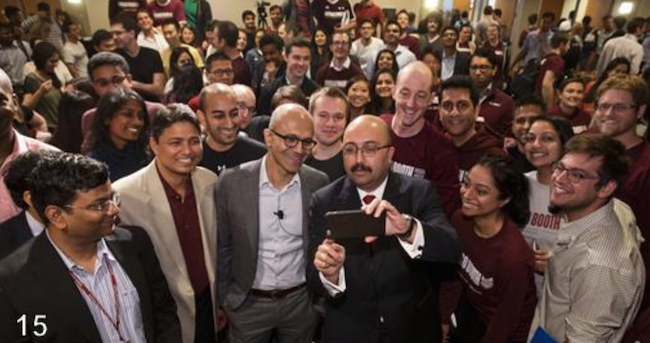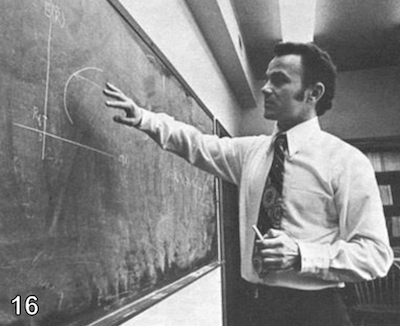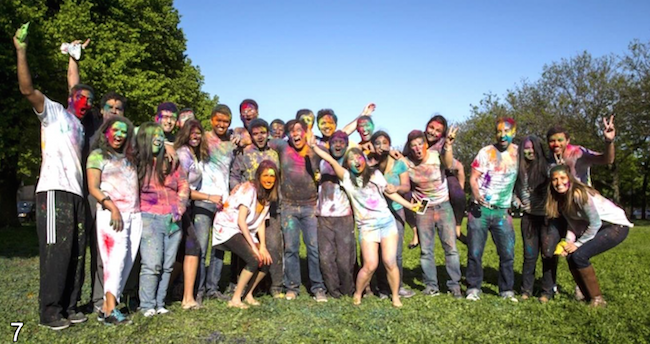 The University of Chicago Booth School of Business has done it again. Seven years ago the school made waves when it invited applicants to respond to its essay prompts via PowerPoint presentation. This year, the school has decided to go even further—innovating on its prior innovation. Applicants now are instructed to select one of 16 photographs that capture elements of the school’s community and culture and offer a response—in whatever format they want—that tells the Admissions Committee how the photo resonates with their own viewpoint on why Booth is right for them.
The University of Chicago Booth School of Business has done it again. Seven years ago the school made waves when it invited applicants to respond to its essay prompts via PowerPoint presentation. This year, the school has decided to go even further—innovating on its prior innovation. Applicants now are instructed to select one of 16 photographs that capture elements of the school’s community and culture and offer a response—in whatever format they want—that tells the Admissions Committee how the photo resonates with their own viewpoint on why Booth is right for them.
“We are always trying to stimulate more authentic reactions,” Chicago Booth Associate Dean of Student Recruitment and Admissions Kurt Ahlm explained when we caught up with him earlier this week. “But we also wanted to give people a better sense of the breadth and depth of the Booth experience,” he continues. “With this new prompt, we wanted to give people the opportunity to see that and reflect on it.”
The idea for the new application essay prompt actually stems from a workshop conducted for staff by the Booth leadership development team earlier this year, Ahlm says. Staff members were given a range of photos and asked to choose one and explain how it captures their leadership style. “Everyone picked something a little different but had really interesting perspectives to share, and that got us thinking internally,” he says.
Booth’s Turn to Portray Itself Visually to Applicants
Part of what the school has liked so much about the PowerPoint exercise it has employed for the past several years is that it offers applicants an opportunity to portray themselves visually to the Admissions Committee. “Now this is our opportunity to visually portray ourselves to applicants,” the Chicago Booth admissions director says.

His team jumped at that opportunity, he says, because applicants sometimes don’t have a complete picture of Booth. “I don’t think people always think of collaboration when they think of Booth,” he says. “The first thing that comes to mind is usually respect for the individual and the flexibility of our curriculum, but sometimes I think that gets misinterpreted as Booth being this highly individualistic community. In fact, it’s that flexibility and respect of individuality that makes this a really interesting place where collaboration thrives.”
Ahlm says he’s not at all concerned that offering applicants so many different photos to respond to—and letting them respond via essay, PowerPoint or another format of their choosing—will create an impossible task when it comes to comparing their responses. “That is the beauty of it—the question anchors on the individuality of each applicant and how they each see the world,” he says. In this way, it reflects the diversity of the school and the value that offers. “There is not one sort of standard Booth student,” he says. “Everybody’s experience here can be vastly different but equally impactful. We wanted through this prompt to convey this notion that we all come to these breakthrough moments because of the engagement we have with so many different prompts and experiences.”
Choosing the Pictures Was Hard
It was no easy task to arrive at the photos, he says. They reviewed many, many photos trying to find ones that would reflect the broader aspects of the Booth culture and community. “We knew we wanted images that could be interpreted in a lot of ways,” he says. “We didn’t want things that were overly prescriptive, inauthentic, or disingenuous of our culture at Booth, and we wanted them all to be thought provoking.”
By offering 16 different images, Ahlm and team hopes that there are enough choices that every applicant can find something that really jumps out at them and propels them to share how they think. “Much in the same way that the PowerPoint didn’t have a right answer, this one really doesn’t either,” he stresses. “Hopefully it provides a lot of interesting perspectives and things we aren’t even thinking about. It really is a kind of rich learning experiment.”

Ahlm acknowledges that some applicants may be turned off by the unusual prompt—even choosing not to apply as a result. “As with anything that you do that is distinctively different, you take the risk of how it will be perceived by applicants,” he says. But the hope is that the innovative exercise will prompt people to think differently. “We are trying to find the people that understand this culture and see what we are all about—what Booth is,” he says. “So if we can provide those prompts that get people to say, ‘Hmm, I am inspired to think about this place in a different way,’ then we’ve done what we set out to do.”
Prompt Was Designed to Draw a Visceral Response from Applicants
The new prompt was not aimed directly at dissuading the use of admissions consultants, Ahlm says. “There will always be value in asking people to give you their input on an essay—this is not geared toward minimizing that,” he says. “Any great essay in whatever format requires feedback.”
The hope, though, was that the prompt would elicit greater authenticity by drawing a visceral response from applicants. “Everyone will react and see things differently, and hopefully the way you see it will connect to experiences you have had, the way you engage, the way you like to learn,” he says. “We expect that everybody will have a unique signature in that regard.”
By extension, Ahlm and his team are wagering that it will be harder for outsiders to coach applicants on how to respond. In the event that someone does say, ‘Here’s the picture and here’s what you should write about,’ he expects that responses will come across as inauthentic.
The novel idea won support when it was vetted beyond the Admissions Committee. “This is very much an evidence-driven institution. We don’t do anything just to do it,” he says. The proposal was met with widespread enthusiasm. “People liked that it was different, that no one else was doing it, that it made people think about why they were pursuing an MBA and why Booth.”
Looking Forward to Unanticipated Findings
In so many ways, Chicago Booth really set out with its new prompt to give applicants a deeper sense of the school. “We are trying to get at something that really reflected who we are in hopes of identifying students who are a great fit,” Ahlm says. “What’s exciting about this is to see what we learn from the answers people provide and how that might influence the next iterations,” he says. “I honestly can’t quite anticipate what we will learn from this.”
 Having said that, the new prompt is not a reflection of dissatisfaction with the original PowerPoint prompt. “We still love that original exercise and it was very much successful for us,” Ahlm says. He notes that applicants who want to are encouraged to respond to this new prompt using a series of slides. “If your preferred vehicle for communicating with us is through a PowerPoint presentation, that is great.”
Having said that, the new prompt is not a reflection of dissatisfaction with the original PowerPoint prompt. “We still love that original exercise and it was very much successful for us,” Ahlm says. He notes that applicants who want to are encouraged to respond to this new prompt using a series of slides. “If your preferred vehicle for communicating with us is through a PowerPoint presentation, that is great.”
In terms of advice for applicants sitting down to craft their responses to the prompt, Ahlm underscores the value of getting to know Booth as well as you possibly can. Make use of the school’s website and marketing collateral, student blogs, people in your own networks, alumni, friends and current students, he encourages. If at all possible, plan a visit to campus. “Again, there is no right or wrong answer. It’s about how much you know about the school and how much you have internalized and reflected on it that you can provide a thoughtful response,” he says.
“We did this for the really intended purpose of giving people an exercise that offers a deeper sense of who we are and what we like to do to get people to problem solve, be strategic and think differently about how they go about portraying themselves in an application process,” Ahlm says.
So, there you have it. Good luck!




